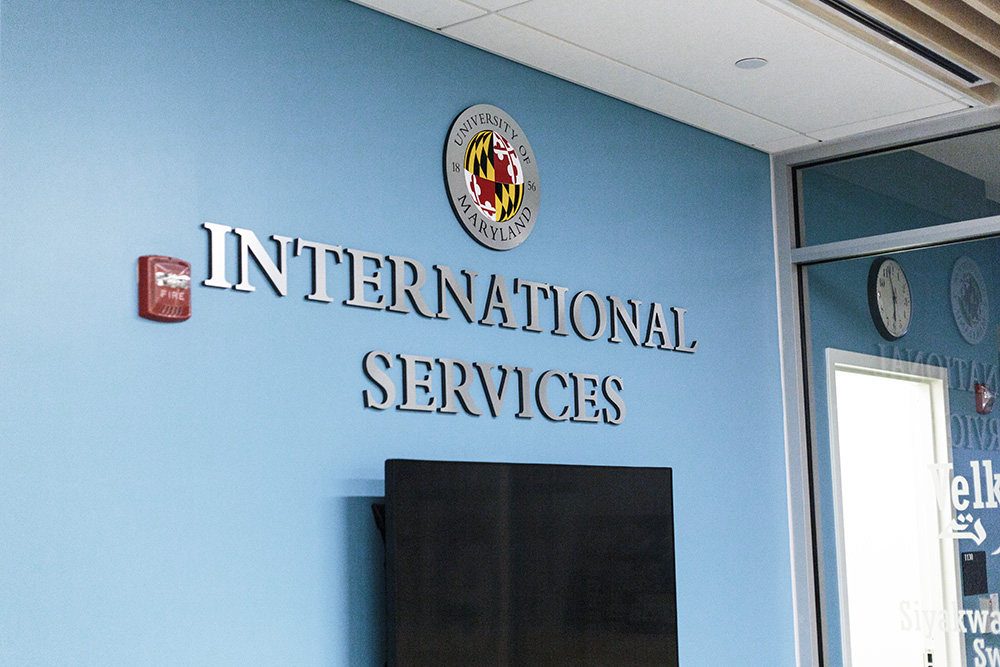The University of Maryland GSG created a petition urging the university to delay the implementation of an international student fee.
The fee, which will be implemented by fall 2017, will apply to all newly enrolled students who are not U.S. citizens or permanent residents. Full-time international students would be charged $125 per semester, and part-time students would be charged $62.50 per semester.
The petition — which was released May 1 via email to students, staff and faculty and on the Graduate Student Government Facebook page — will be delivered to Provost Mary Ann Rankin. It calls for the delay “so that [the fee] can pass through the steps already in place that ensure the full transparency and accountability of the University of Maryland’s administration.” As of Thursday, it had 259 signatures.
The fee revenues aim to expedite visa assistance and improve academic resources to increase support for international students, according to this university’s financial aid office website.
“It’s not even necessarily about the fee in the first place, but that the process isn’t being followed that’s required by system policy for every single mandatory or non-mandatory fee,” said Caden Fabbi, GSG chief of staff. “We’re just trying to get student support obviously to say that any new fee establishment or increase should follow the processes that every other department on campus has to follow to create a new fee.”
[Read more: University of Maryland will implement a fee for international students by fall 2017]
Mandatory fees and room and board charges have to go through a five-step approval process, including recommendations by the Committee for the Review of Student Fees, which consists of university officials and students who advise the president and the cabinet on mandatory and non-mandatory fee proposals. The committee had not been involved with the international student fee at any point, and GSG was not consulted in the creation of the fee, Fabbi said.
Fabbi said if this fee goes through without student oversight, it could lead the way for other fee proposals to forgo student input.
“That sets a precedent not just for this campus, but for every other campus in the University System of Maryland, that administrators can impose a fee on students without their input, even though it’s required by system policy specifically, for mandatory and non-mandatory fees,” Fabbi said.
University System policy states that to make the “most transparent decision regarding student fee schedules,” each campus will establish a committee with “stakeholders representing each area supported by a student fee.”
A.J. Pruitt, Student Government Association president, said he can’t really “formulate a position on the actual fee,” because he doesn’t know what the $125 fee would go toward.
“We as a university are so committed to the shared governance model,” said Pruitt, a junior economics and government and politics major. “With this specific fee, we have sort of put that aside and are gonna sort of try and just shove it down the throats of students.”
Pruitt said he’s been part of conversations with the administration where they’ve justified and talked about the fee in a “tone-deaf nature.”
“Student leaders have tried to understand more about this fee, how it was implemented, and have either been met with confusion about really what the fee is, or just been shut down completely,” Pruitt said. “I really do think that President Loh’s comments, where he sort of stated that international students can take it or leave it, was extremely troubling.”
University President Wallace Loh said during an April 7 GSG meeting that the fee will go toward services students have asked for.
“If they don’t want to pay it, they don’t have to come to the University of Maryland,” Loh said.
[Read more: President Loh: International students who don’t like UMD’s fees ‘don’t have to come’]
International students made up about 33 percent of the graduate student population in fall 2016, with 3,567 graduate students from foreign countries, according to the Office of Institutional Research, Planning, and Assessment. There were also 1,311 international undergraduate students as of fall 2016.
Stephanie Cork, GSG president, said because international students make up more than 30 percent of the graduate student population, they should be supported by the campus community.
Cork, a Canadian citizen, said many of her international student colleagues have single-entry visas, meaning if they leave the U.S. they will not be able to return with the same visa even if it is still valid.
“Making sure that they’re safe, and financially supported and supported by community is necessary,” Cork said, “[especially] if they can’t go home.”



